|
|
 |
|
|
|
|
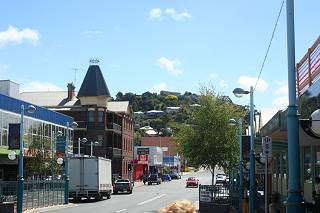
|
Burnie was a surprise to all of us. We did not know
quite what to expect of this little town on the
north coast of Tasmania. Indeed we had no idea what
to expect of Tasmania at all. We pulled into a tidy
little port with ship load after ship load of timber
and wood chips! The area's number one industry is
timber, mostly for paper-making and for shipping to
Japan and Korea. And obviously that means forests.
But this was only the beginning of our new
discoveries. |
|
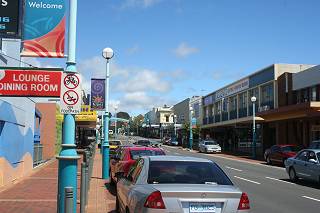
|
Burnie was first settled in 1827, and was known as
Emu Bay. Its name was changed to honor a director of
the Van Diemen"s Land Company director, George
Burnie, in 1840. This "company town" first tried
raising sheep, but the grass quality is
non-nutritious. So the sheep business literally died
out. Then came lumber and shipping. Today, tourism
is just beginning to make a contribution to the
economy. The village is bright and clean - home to
some 20,000 residents. But it has yet to develop a
charm of its own. |
|
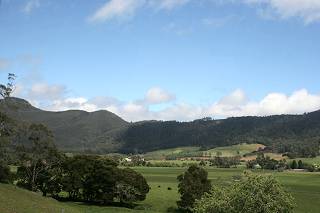
|
The country around Burnie is nothing short of
spectacular. A lot of it is dedicated to the raising
of dairy cattle. Burnie is famous for its own cheese
industry. But a lot of its is also wild and quite
beautiful and lush. Tasmania has snakes, some of
them poisonous, so hikers must beware. But the
climate is fairly constant and pleasant, never
getting either too cold or too hot. |
|
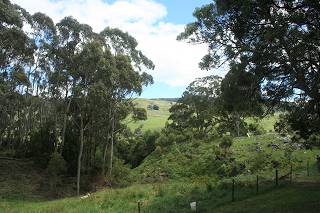
|
A
new distilling industry has started up in Burnie,
making a Tasmanian whiskey. This was so new,
however, the local restaurant and bar did not have
any of the local product to try. Tasmania, on the
other hand, has been brewing beer for some time -
indeed, lays claim to the first brewery in
Australia!
The
beauty of the land is, however, the best source of
intoxication here. |
|
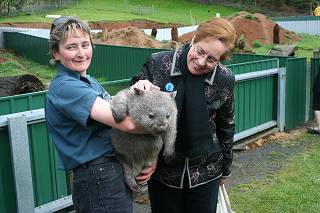
|
We
visited a wildlife preservation park (Wing's
Wildlife Park) for an up-close look at the
native inhabitants of Tasmania. Here, Diane has a
chance to greet a wombat "up close and personal." Do
not miss our
Wildlife pages for Australia, Tasmania, and New
Zealand! Diane even got wrapped up in a python! |
|
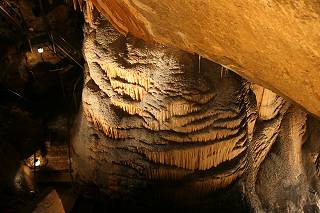
|
We
also visited
Gunns Plains Cave not far from the farm. We have
seen many caves over the years, but this one was
quite interesting. The shot at left is of a "Wedding
Cake" - a familiar feature for many spelunkers.
Also, these caves had "glow-worms": in the pitch
dark, these tiny entities (a mosquito-like fly in
the larvae stage) produce a luminous excretion which
serves to attract insects that inadvertently find
their ways into the caves. The insects are trapped
in a sort of web and then become food for the "glow
worms." |
|
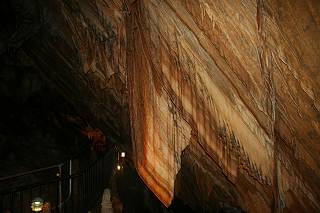 |
Something new for us, however, were several curtain
formations such as the one at left. Rather than the
usual daggers from above (stalactites) or pointed
cones (stalagmites) which are formed by drips from
the top accumulating over time, these are formed by
drips from cracks that appear to build sheets of
minerals into curtains - and they are even
translucent. They were very lovely. |
|